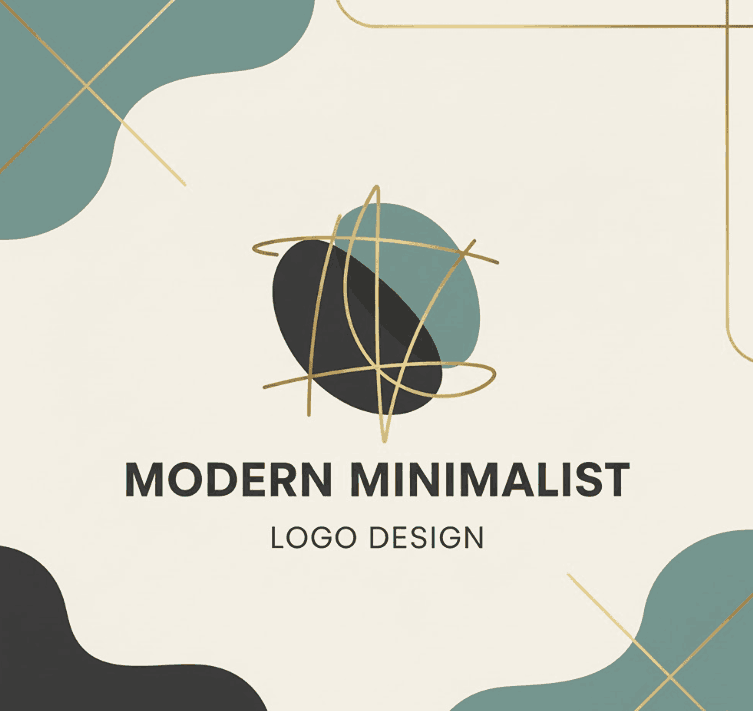Table of Contents
- Introduction: Why Minimalist Logos Matter
- Principles of Modern Minimalist Logo Design
- Inspiring Minimalist Logo Ideas & Trends
- How to Incorporate Your Brand Fonts in Minimalist Logos
- Examples from Your Font Collection
- Process & Tips for Designing Minimalist Logos
- Pitfalls to Avoid
- Conclusion & Next Steps
- References
1. Introduction: Why Modern Minimalist Logo Design Matter
Modern brands face a visual overload: websites, social media, ads, packaging. Logos that are too complex tend to become unreadable when scaled down, lose clarity, or appear outdated. That’s where modern minimalist logo design steps in — it strips branding to its essence, offering clarity, memorability, and flexibility.
The “less is more” philosophy isn’t about being plain; it’s about smart reduction. As Adobe explains: minimalist logos should strip away unnecessary embellishments and focus on core visual elements like shape, negative space, and strong typography.
In 2025, minimalist logos continue to trend because they adapt well to digital platforms and maintain legibility across devices.

2. Principles of Modern Minimalist Logo Design
To design a strong minimalist logo, keep these guiding principles in mind:
- Simplicity: Use only essential shapes or letters.
- Negative space: Let empty areas speak and shape symbol meaning.
- Single focal element: One icon, monogram, or stylized letter.
- Limited color palette: Usually 1–2 colors, often monochrome or neutral tones.
- Clean typography: Sans-serif, geometric, or subtle serif fonts work best.
- Versatility: Logo must look good in black & white, small sizes, and on different backgrounds.
These align with trends in minimalist logo showcases and galleries.
3. Inspiring Modern Minimalist Logo Design Ideas & Trends
Below are modern ideas and trends in the minimalist logo space:
- Monogram / Lettermark logos: Use initials or stylized letters (e.g. “E” for Edric).
- Geometric shapes: Circles, triangles, simple polygons.
- Negative space trick: Hidden shapes or dual meaning (like arrow in “A”).
- Single-line or outline logos: One stroke, continuous line.
- Responsive Logos: Logo adapts shape depending on screen size or context.
- Symbol + Text pair: Minimal icon accompanied by clean wordmark.
- Rounded / soft edges: Friendly and modern feel.
These trends are visible in contemporary logo showcases across design platforms.
4. How to Incorporate Your Brand Fonts in Modern Minimalist Logo Design
Typography is a crucial component of minimal logos. Using your own font assets gives your brand an edge.
When creating minimal logos, you can:
- Use your font as the wordmark component (brand name, tagline).
- Alter a glyph (letter) slightly to become an icon.
- Pair your font with a minimal icon, ensuring harmony in stroke weight.
Here are some font mockups from your collection you can use:
- Allorta Elegant Font — elegant serif flair for brand names.
- Monice Sans Serif Font — clean sans-serif great for minimal wordmarks.
- Anamelia Sans Serif Font — neutral style, good for modern logos.
- Coet Sans Serif Font — geometric sans with balanced proportions.
Use one of these fonts for your wordmark in a minimal logo layout — it helps make the logo uniquely yours.
5. Examples from Your Font Collection
Here are ways to use your fonts within Modern Minimalist Logo Design ideas:
- Wordmark-only logos — e.g. using Monice Sans with minimal spacing and an accent element (maybe a dot or line).
- Lettermark with a twist — take the letter E in Allorta, manipulate negative space or stroke to create a subtle symbol.
- Font + icon — combine a small geometric icon next to your brand name in Coet Sans.
- Glyph-based logo — use a key stylized glyph from Anamelia as the entire brand mark.
These approaches let your typographic identity shine while keeping the design minimal.

6. Process & Tips for Modern Minimalist Logo Design
Here’s a process flow for creating minimalist logos:
- Research & Conceptualize: Look at competitor logos, moodboards, minimalist galleries.
- Sketch Thumbnails: Quick, many variations.
- Dieline / Digital Roughs: Create vector sketches in Illustrator or Figma.
- Restrict to essentials: Remove anything unnecessary.
- Apply Typography: Use one of your fonts and integrate it.
- Test Responsiveness: Scale down, grayscale, invert, etc.
- Feedback & Iterate: Show to peers or clients; refine balance.
- Finalize and Export: Prepare vector, PNG, black/white, multiple sizes.
A good minimalist logo will feel intentional — nothing extra, but still expressive.
7. Pitfalls to Avoid
- Don’t overdo negative space — it should enhance meaning, not confuse.
- Avoid relying too much on trendy icons (that may become dated).
- Don’t use too many fonts or weights — keep typography consistent.
- Don’t ignore testing in small sizes — many logos break down when scaled.
- Avoid complexity in the name — if the brand name is long, consider abbreviations or monogram.
8. Conclusion & Next Steps Modern Minimalist Logo Design
Modern Minimalist Logo Design is not just a trend — it’s a way to future-proof your brand identity across contexts. By focusing on simplicity, negative space, and strong typography (especially with your custom fonts), you can create a logo that’s timeless, memorable, and flexible.
Next steps for Edric Studio:
- Sketch 5 minimal logo concepts using your fonts.
- Test on different sizes and backgrounds.
- Choose 1–2 to refine.
- Use in branding, mockups, and marketing.
References
- Looka — Minimal Logo Design Inspiration & Examples
- Adobe — Minimalist Logo Design: Strip to Essentials
- Tailor Brands — 30 Minimalist Logos That Make an Impact
- 99Designs — Minimalist Logo Examples & Design Gallery
